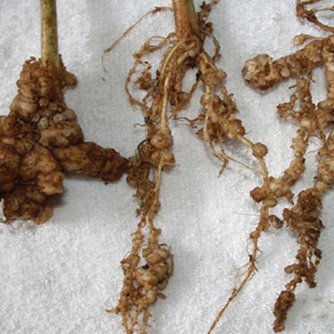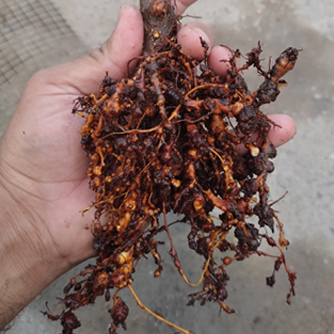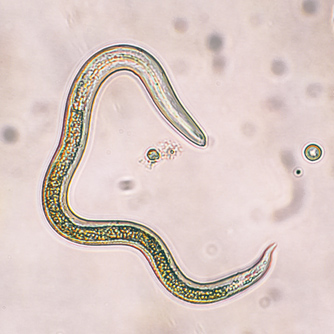Nematodes
BackNematodes are tiny worm-like creatures which are sometimes called eelworms. In the soil there are many different types, including parasitic nematodes which invade plant roots causing distortion and damage. The best known type is called the root-knot nematode.
Parasitic nematodes are less than 0.5mm so they're invisible to the naked eye but the root damage is easy to spot because it is so significant. Roots often look like they're a tangled, knotted mess with unusual bumps and galls. Root crops, like carrots and potatoes, become distorted with wart-like growths over them.
Symptoms above ground can vary but in general plants infested with nematodes struggle to thrive because their roots are so damaged. Common symptoms include stunted plant growth, yellowing leaves and wilting easily during warm weather. Edible plants will have reduced yields.
Nematodes tend to be most common in soils with low organic matter and thrive in warm conditions.

Roots with galls caused by root knot nematodes
Plants Attacked
Nematodes attack many ornamental plants, like roses, carnations and chrysanthemums, and a very long list of edibles including beans, tomatoes, eggplants, broccoli, cauliflower, carrots, cucumbers, lettuce, potatoes, pumpkins, strawberries and zucchini.
How to Control Nematodes Organically
Once a plant has been infected, and its root system compromised, it can be hard to rescue. We strongly recommend early intervention and treatment to ensure success against nematodes.
- In the veggie patch apply OCP eco-nemguard at planting time to kill off nematodes and give new seeds, seedlings and plants a chance to establish healthy roots. You are unlikely to completely eradicate this pest so follow up applications are recommended to keep suppressing their numbers.
- In addition regularly add organic matter to your soil, like compost and manures, and practice crop rotation to help prevent nematode numbers building up.

Nematode damage on fig roots

Parasitic nematode under a microscope


